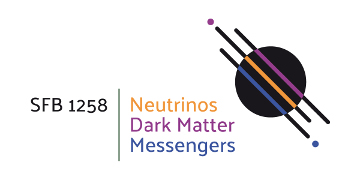Colloquy on experimental and theoretical activities on the Diffuse SuperNova Background within the SFB1258“
9:30 Coffee
Session 1 DNSB Experimental activities
10:00 Design, Status and Physics Potential of JUNO - Hans Steiger (Uni Mainz)
10:20 Potential and Methods for the first DSNB detection with JUNO - Matthias Mayer (TUM)
10:40 Questions & Discussion
11:00 Coffee
Session 2 DNSB Theoretical activities
11:10 Status of self-consistent core-collapse supernova modeling - Thomas Janka (MPA)
11:30 Status and prospects of theoretical DSNB modeling - Daniel Kresse (MPA)
11:50 Questions & Discussion
Closing
Please find short abstracts for the talks below:
DSNB (experiment):
Hans Steiger (UniMainz): Desing, Status and Physics Potential of JUNO
Abstract: The Jiangmen Underground Neutrino Observatory (JUNO) is a 20 kton multi-purpose liquid scintillator detector currently being built in a dedicated underground laboratory in Jiangmen (PR China). Data-taking is expected to start in 2023. JUNO’ s main physics goal is the determination of the neutrino mass ordering using electron anti-neutrinos from two nuclear power plants at a baseline of about 53 km. JUNO aims for an unprecedented energy resolution of 3% at 1 MeV for the central detector, which will allow determining the mass ordering with 3 s significance within six years of operation. Furthermore, measurements in neutrino physics and astrophysics, such as estimating the solar oscillation parameters and the atmospheric mass splitting with an accuracy of 0.5% or better, will be performed. In this talk, JUNO’s design, the status of its construction, and its physics potential, will be presented alongside a short excursion into its rich R&D program.
Matthias Mayer (TUM): Potential and Methods for the first DSNB detection with JUNO
The Jiangmen Underground Neutrino Observatory (JUNO) expects to detect or exclude the diffuse supernova neutrino background (DSNB) at a confidence level greater than 3σ after 10 years of exposure. This talk highlights the prospects and challenges of the DSNB search at JUNO regarding MC studies of various event discrimination methods used to separate the DSNB signal from background sources within its energy range. The pulse shape discrimination methods used for this DSNB search are able to utilize the excellent properties of the JUNO scintillator liquid studied by the JUNO working group at TUM.
Thomas Janka (MPA): Status of self-consistent core-collapse supernova modeling
Abstract: Ab initio" three-dimensional simulations have meanwhile convincingly demonstrated successful explosions by the neutrino-driven mechanism. However, these 3D simulations are still much too demanding to cover the tremendous diversity of progenitor stars of different masses, metallicities, and rotation rates, originating from single or binary evolution and giving birth to either neutron stars or black holes, whose relative probabilities also depend on the still incompletely known neutron star equation of state. The talk will sketch the modeling approach that we take to cover this huge space of stellar possibilities to obtain neutrino signals that are needed for improved predictions of the diffuse supernova neutrino background (DSNB).
Daniel Kresse (MPA): Status and prospects of theoretical DSNB modeling
The diffuse supernova neutrino background (DSNB) is an observational target of the gadolinium-loaded Super-Kamiokande detector and the forthcoming JUNO and Hyper-Kamiokande detectors. In my talk, I will outline the current status of theoretical DSNB modeling, discuss its major uncertainties, and sketch prospects for future advances.


